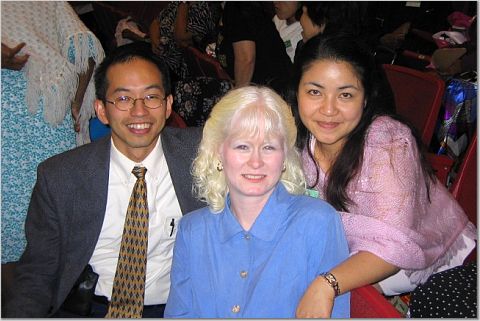Let the Lessons Begin!
Welcome to the first lesson of our new virtual classroom here at Kelas Bahasa!
My aim is to bring to you, at least twice per month, a new mini-lesson that you can use immediately to improve and progress with your learning and fluency in the Indonesian language. Are you ready? Let's go!
To Be or Not To Be
One of the great grammatical features of the Indonesian language that makes it easy, or at least easier than most other languages, is that there is no form of “to be.” Instead, it is usually understood by the context of what is being said. For example:
I am happy. = Saya senang. (Literally, “I happy”)
An equivalent to “am” is simply not necessary in Indonesian.
However, there are occasions when the equivalent of the word “is” or “there is/are” is in fact used. That is the topic for today’s discussion.
Ada
It is most helpful to remember that the translation for “ada” is “there are” or “there is” rather than just “is.” It will help to keep you out of trouble, since "ada" is a versatile word that really has a range of meanings depending on how it is used, as we will see. It is therefore very useful to get acquainted with how it is commonly used in everyday speech.
So if you were going to ask if there is any nasi goreng (fried rice) on the menu at the local warung, (diner) you would say:
“Apakah ada nasi goreng hari ini?” Or simply, “Ada nasi goreng?”
Another example might be when making a telephone call and asking if the person you wish to speak to is available:
“Lina ada di rumah?” (Is Lina at home?)
The answer might simply come back:
“Ada.” (Yes, she is.) or “Tidak ada.” (No, she’s not.)
Awas! The opposite of "ada" is "tidak ada." You would never say, "ada tidak."Or you may be provided with more detailed information, such as:
“Lina ada di kamar mandi.” (Lina is in the bathroom.)
Perhatian: In this instance, the word "ada" is actually optional, since you might also hear, "Lina di kamar mandi."You may have noted in the above example that "ada" can also have the meaning of being present or at a location.
Just one more twist to this word. At times, “ada” can also have the meaning “to have.”
Ibu ada berapa anak? (How many children do you have?)
Saya ada tiga anak. (I have three children.)
There are a few other words that convey the meaning “to have” as well. But that is a topic for another time. For now, look for ways to practice using the word “ada” to indicate there is, there are, to have, located at, or to be present.
Another way to get to know "ada" better is by fiddling with the sentences you create. Try omitting it altogether. See if the sentence still makes sense without using "ada." By doing so you will gain an intuitive feeling for when it is optional and when it should be used.
That's the scoop on "ada." Your questions, comments, complaints, further enlightenment or discussion regarding this intriguing little word are invited!
Sampai kita belajar bersama-sama sekali lagi...
gabrielle
www.hello-indonesia.com
Kosa Kata Baru (new vocabulary)
hari ini = today
perhatian = notice
awas! = caution!
kamar = room
mandi = bath or bathe
kamar mandi = bathroom or room where one bathes
kecil = small or little
kamar kecil = restroom, toilet
sampai = until
kita = we, inclusive of the person you are speaking to
belajar = to study, to learn
bersama-sama = together
sekali = one time
lagi = again
P.S. Do you know someone else who is interested in learning to speak Indonesian? Click on the little envelope at the bottom right corner of this message and tell them about Kelas Bahasa, where the learning never ends.

